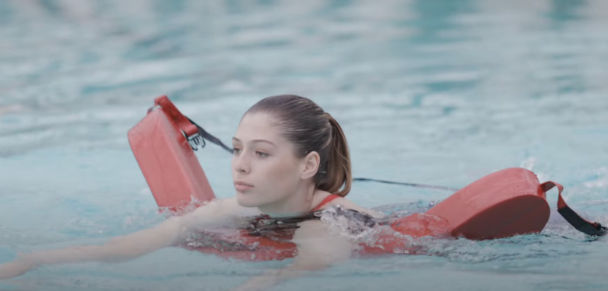Lifeguards play a crucial role in ensuring the safety of swimmers at pools, beaches, and other water environments. With drowning being a leading cause of accidental death, effective lifeguard training is essential to equip individuals with the skills and knowledge necessary to prevent incidents and respond swiftly in emergencies. This article delves into the importance of lifeguard training, the key components of a successful program, and highlights the best lifeguard certification offered by the American Lifeguard Association (ALA).
The Importance of Lifeguard Training
Lifeguard training is vital for several reasons:
1. Preventing Drowning Incidents
Drowning can happen quickly and silently. Lifeguard training focuses on proactive measures to prevent incidents, such as monitoring swimmer behavior, recognizing signs of distress, and implementing safety protocols. Lifeguards are trained to identify potential hazards and enforce rules that minimize risks, such as prohibiting running near the pool or ensuring appropriate swimming attire.
2. Emergency Response Skills
In the event of a water-related emergency, lifeguards must act swiftly and effectively. Training programs teach essential skills, including:
- Rescue Techniques: Lifeguards learn various rescue techniques, including passive and active rescues, to retrieve individuals in distress safely.
- CPR and First Aid: Certified training in cardiopulmonary resuscitation (CPR) and first aid equips lifeguards to handle emergencies, from drowning incidents to medical emergencies that may arise on-site.
- Use of AEDs: Lifeguards are trained to use Automated External Defibrillators (AEDs) in cases of cardiac arrest, ensuring a higher chance of survival for victims.
3. Communication and Leadership Skills
Effective communication is essential for any lifeguard. Training programs emphasize the importance of clear instructions and signals to manage pool or beach environments efficiently. Lifeguards must also demonstrate leadership skills, particularly when coordinating rescue efforts and ensuring that all swimmers follow safety protocols.
Key Components of Lifeguard Training
A comprehensive lifeguard training program includes several key components:
1. Water Rescue Techniques
Lifeguard training covers various water rescue techniques tailored to different situations. Lifeguards learn to assess the situation and choose the most effective method, whether it be reaching, throwing, or swimming to a distressed swimmer.
2. Surveillance Techniques
Training programs stress the importance of constant vigilance. Lifeguards are taught to scan the water regularly and identify potential risks or emergencies. They learn to use a systematic approach to ensure that no area is overlooked.
3. Emergency Action Plans (EAP)
Lifeguards must be familiar with Emergency Action Plans (EAPs) specific to their locations. These plans outline procedures to follow in various emergencies, ensuring that all lifeguards know their roles and responsibilities. Training involves practicing these plans through drills to reinforce quick and efficient response.
4. Health and Safety Protocols
Lifeguards must be knowledgeable about health and safety protocols, including sanitation practices for pools, recognizing environmental hazards, and understanding the risks associated with various aquatic activities.
5. Physical Fitness Training
Physical fitness is an essential aspect of lifeguard training. Lifeguards must be strong swimmers capable of performing rescues and maintaining endurance during long shifts. Training programs often include conditioning exercises, swimming drills, and rescue simulations to enhance fitness levels.
The Best Lifeguard Certification by the American Lifeguard Association (ALA)
When it comes to lifeguard training, the American Lifeguard Association (ALA) stands out as a leader in providing comprehensive certification programs. The ALA’s Lifeguard Certification program is highly regarded for its quality and effectiveness.
Features of ALA Lifeguard Certification
- Comprehensive Curriculum: The ALA offers a thorough curriculum covering essential skills, including water rescue techniques, CPR, first aid, and emergency response protocols. The training is designed to prepare lifeguards for real-life situations effectively.
- Hands-On Training: The ALA emphasizes hands-on training, allowing participants to practice rescue techniques in controlled environments. This practical experience is crucial for building confidence and competence.
- Certification Validity: ALA certifications are valid for two years, ensuring that lifeguards maintain current knowledge and skills. Recertification courses are also available to help lifeguards stay updated with the latest techniques and protocols.
- Experienced Instructors: The ALA’s training is led by experienced instructors who bring real-world experience to the classroom. They provide valuable insights and guidance to participants, enhancing the learning experience.
- Nationwide Recognition: ALA certification is recognized across the United States, making it a valuable credential for those seeking employment as lifeguards.
How to Obtain ALA Lifeguard Certification
- Enroll in a Course: Interested individuals can find a local ALA training course through their website. Courses are offered at various locations, including community pools, recreation centers, and schools.
- Complete the Training: Participants must complete the required training hours, which typically include both classroom instruction and hands-on practice.
- Pass the Certification Exam: To obtain certification, participants must successfully pass a written exam and demonstrate proficiency in all required skills.
- Receive Certification: Upon completion of the course and passing the exam, participants receive their ALA Lifeguard Certification, which is valid for two years.
Conclusion
Lifeguard training is an essential investment in safety, providing individuals with the skills and knowledge needed to protect lives in aquatic environments. By understanding the importance of training, the key components involved, and the value of obtaining certification from reputable organizations like the American Lifeguard Association, aspiring lifeguards can embark on a fulfilling and impactful career. With proper training, lifeguards are empowered to act decisively in emergencies, ultimately making a difference in their communities and safeguarding lives.
Must Read: Choosing the Right Home Builder in Delray Beach: Tips and Advice
